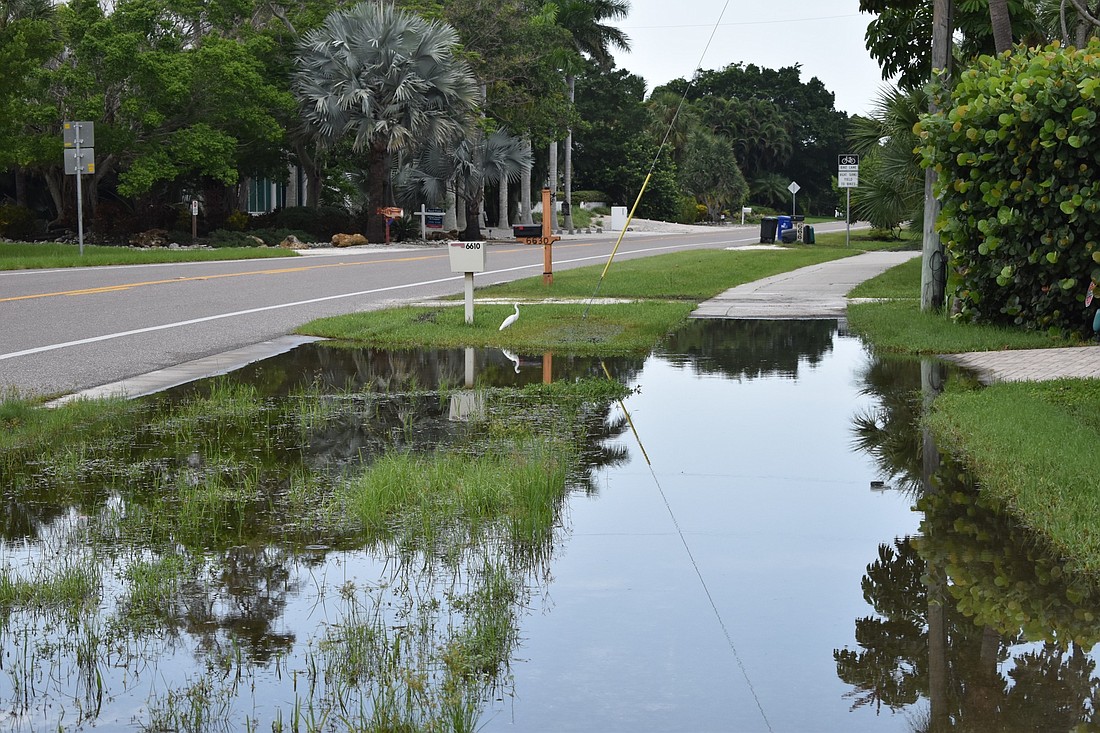- April 16, 2025
-
-
Loading

Loading

An engineer working with the town on a four-phase study of sea-level rise and what to do about it told commissioners on Monday the town is ahead of other coastal communities in preparing for the future of phenomenon.
"You're asking the right questions,'' said engineer Samantha Danchuk of APTIM Environmental and Infrastructure LLC.
APTIM and the town are in the second phase of the study that will one day implement changes to deal with the expected environmental changes. The second phase is entitled "define impacts" after completing the initial assessments phase.
“(There are) already ongoing projects that are going to upgrade your system, so you’re already actively making the investment,” Danchuk said. “You’ve already submitted grant applications for the state money and are ready for the federal infrastructure money that’s coming in, and you’re asking the right questions.”
In August 2019, the town received $45,443 from the Florida Department of Environmental Protection for its sea level rise plan.
“The next opening of the grant cycle will be Sept. 1, and it’s an opportunity to request funding, but also the state is in the middle of developing its own resiliency plan with priority projects across the state,” Danchuk said. “And so, you want your vulnerabilities recognized and you want to make sure they know what projects are moving in place, so as they start to dedicate funding, you’re right there at the top.”
Among the initial impacts discovered in phase one, APTIM found the town’s Public Works Complex, Recreation Center and Fire Station 92 are subject to nuisance flooding whereas the Mid-Key Water plant is subject to more serious disturbance flooding. APTIM’s report found the police station, Town Hall and South Key Water Plant have unlikely short-term risk.
The report found the Mobil gas station, the town's only filling station, is prone to disturbance flooding. However, other commercial businesses such as the Bank of America, Suntrust Bank complex, Cannons Marina, Harborside Marina are subject to nuisance flooding.
APTIM found the post office, the Publix, Mediterranean Plaza, First Bank and CVS Pharmacy have unlikely short-term risk.
Phase three is called “Adaptation Strategies.” It is meant to determine engineering, protective measures, policy initiatives and approaches to land use, as well as how to pay for these components.
Phase four, “Implementation Plan,” will execute phase three’s strategies.
“I think we’re talking either maybe by June of next year that we have a plan ready for your review, and get it ready before your budget cycle,” APTIM engineer Douglas Mann told town commissioners.
Danchuk recommended the town “get in line” with the Sarasota/Manatee Metropolitan Planning Organization for its resilient corridor study to make road improvements to the north end of the island along Gulf of Mexico Drive in areas prone to flooding.
“The Florida Department of Transportation is actively looking across the state at evacuation routes that are vulnerable to high-tide flooding, and so they’ll start to look at what they need to do either to elevate those streets to add drainage to add pumps,” Danchuk said.
The town has committed funding this fiscal year to conduct an assessment of flooding and drainage issues in the Buttonwood Harbour neighborhood and Sleepy Lagoon.
At-Large Commissioner BJ Bishop expressed her concerns about the sea level rise issues Longboat Key faces.
“I’m glad there are some public members here, but quite honestly, this is going to need to be a dog and pony show, and I think the town is going have to continue to bring the rest of the residents in because they need to understand this information,” Bishop said. “And, it’s not just magically we’re going to put in another pump in their neighborhood and they’re saved forever, so I think we have some more work to do.”
APTIM’s report also acknowledged other areas of the island that are prone to flooding such as Longbeach Village and GMD near Zota Beach Resort.
“It was a great report,” Mayor Ken Schneier said. “It’s a scary report.”
Mann said once capital improvement projects are planned, some town ordinances will have to be adjusted to accommodate.
“Town staff, town attorney (and) the Town Commission need to work over the next couple of months to tweak the ordnances so that they reflect sea level today and they reflect sea level in 10 years,” Mann said.
Citing her experience as an assistant director of Broward County’s Resilience Department from 2014-2021, Danchuk said Longboat Key already has a strong Town Code to help address sea level rise issues. She recommended making changes to establish minimum and maximum heights for seawall elevations along with changes to drainage designs, wetland proximity and flood trespassing as a public nuisance.